1. Radium Clocks

Glow-in-the-dark clocks seemed futuristic and convenient in the 1950s, thanks to their radium-painted dials. Radium was a radioactive element that glowed naturally, making it ideal for use on clock faces and instrument panels. While the glow was undeniably impressive, the health risks were staggering. Workers who painted these dials often licked their brushes to create finer lines, unknowingly ingesting radium. Many suffered from devastating health problems, including bone fractures, anemia, and a unique form of jaw necrosis called “radium jaw.”
Even for those who simply owned radium clocks, there were risks. The radioactive paint emitted small amounts of radiation, which could accumulate over time. Families kept these clocks on bedside tables, unknowingly exposing themselves to harmful effects while they slept. Today, radium is no longer used in consumer products, but its legacy remains a sobering example of how technological advancements can come with hidden costs. Discover the history of radium here.
2. Asbestos Insulation
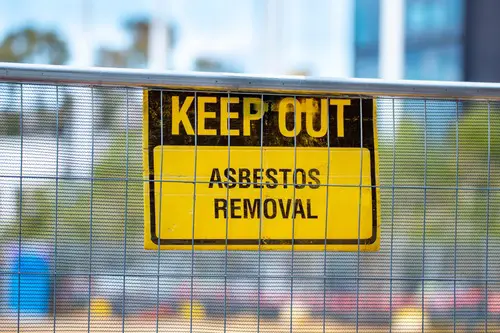
Back in the ’50s, asbestos was the go-to material for insulation, found in everything from ceilings to floor tiles. It was praised for being fire-resistant and durable, and builders loved its versatility. However, the danger lay in the tiny asbestos fibers that could become airborne during installation or over time as the material aged. When inhaled, these fibers could lodge in the lungs and lead to serious illnesses like asbestosis, lung cancer, and mesothelioma. Homeowners, construction workers, and even children playing in attics or basements were all at risk, unknowingly breathing in these harmful particles. The true extent of asbestos-related health risks didn’t come to light until decades later, leaving many families grappling with illnesses they didn’t understand.
What’s particularly troubling is how common asbestos was in everyday life. From brake pads in cars to ironing boards in homes, it seemed nearly ubiquitous. People handled it without gloves or masks, believing it was completely safe. Even today, asbestos lingers in older homes, requiring professional removal to ensure safety. If not properly addressed, renovating or demolishing these spaces can release dangerous fibers into the air. Modern building materials have thankfully moved away from asbestos, but its legacy serves as a cautionary tale about the importance of long-term safety over short-term convenience. Learn more about asbestos dangers here.
3. Lead-Based Paint

If you lived in a house built in the ’50s, chances are its walls were covered in lead-based paint. This paint was prized for its durability, vibrant colors, and ability to resist moisture. However, the lead content made it a silent health hazard, especially for children. When the paint chipped or deteriorated, it created lead dust that could be inhaled or ingested. Kids often put painted objects in their mouths or played in areas where lead dust settled, leading to significant exposure. Over time, this could result in lead poisoning, which affects the brain and nervous system, causing developmental delays, learning difficulties, and even behavioral problems.
The dangers of lead weren’t fully understood in the 1950s, so homes, schools, and playgrounds were filled with this toxic material. Parents had no way of knowing the harm lurking in their walls or furniture. It wasn’t until the late 20th century that stricter regulations were put in place to limit lead use in consumer products. Even now, older homes may still contain lead-based paint, posing a risk during renovations if proper precautions aren’t taken. This history underscores the importance of understanding the materials we use in our living spaces. Read more about lead paint hazards.
4. Mercury Thermometers
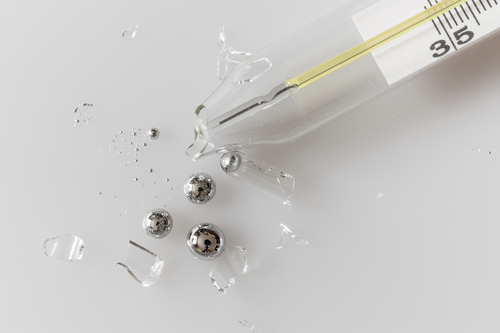
Every household had a mercury thermometer tucked in their medicine cabinet, a staple for monitoring fevers and illnesses. These thermometers worked well and were considered reliable, but they came with a significant risk. Mercury is a toxic heavy metal that can cause severe health problems if inhaled, ingested, or absorbed through the skin. If a thermometer broke, which was not uncommon, the mercury inside could spill out. Children were often fascinated by the silvery liquid, rolling it around with their fingers or collecting it without realizing the danger.
Improper disposal of broken thermometers was another concern, as mercury could contaminate soil and water. Once in the environment, mercury doesn’t break down and can accumulate in the food chain, particularly in fish. While modern households have largely replaced mercury thermometers with safer digital versions, many still remember the days when these delicate instruments were a common sight. This change highlights the progress made in understanding and reducing environmental and health risks.
5. Aluminum Cookware

In the 1950s, aluminum cookware was affordable, lightweight, and a favorite in many kitchens. It conducted heat well, making cooking faster and more efficient. However, concerns about its safety began to surface in later decades when researchers suggested a possible link between aluminum exposure and Alzheimer’s disease. Although this connection remains debated, the fear it sparked led many to switch to alternatives like stainless steel or cast iron.
Aluminum’s potential health risks weren’t the only issue; acidic foods like tomatoes or citrus could react with the metal, causing it to leach into meals. Families unknowingly consumed trace amounts of aluminum daily. While regulatory agencies have deemed modern aluminum cookware safe, the 1950s version lacked the protective coatings and standards we rely on today. It’s a reminder to always scrutinize the materials we use for food preparation.
6. Cigarette Vending Machines
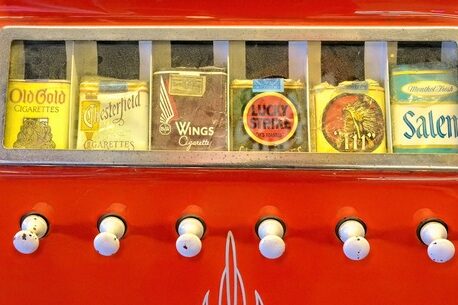
Cigarettes were marketed as glamorous and sophisticated in the 1950s, and vending machines made them incredibly easy to access. These machines were placed in homes, workplaces, and public spaces, normalizing smoking for everyone, including teenagers. The lack of age restrictions meant that children could purchase cigarettes with pocket change, often imitating the adults around them. Back then, smoking was not only socially acceptable but also encouraged by aggressive advertising campaigns.
The health risks of smoking, such as lung cancer, heart disease, and chronic respiratory problems, were not widely recognized at the time. By the time the dangers became apparent, countless lives had been affected. The prevalence of cigarette vending machines contributed to a culture of widespread smoking, leaving a lasting impact on public health. Today, such machines are heavily regulated or banned altogether, reflecting the hard-earned lessons of the past.
7. Vinyl Records with Toxic Additives
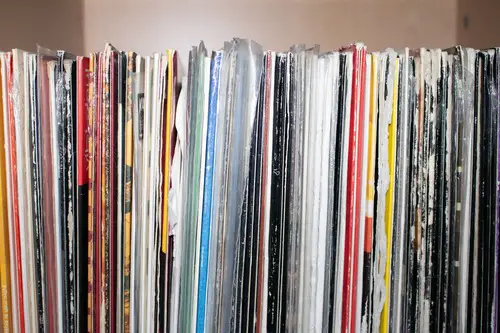
While vinyl records brought music to life in the 1950s, their production came with hidden dangers. Manufacturers used additives like phthalates and heavy metals to make the records durable and flexible. These chemicals, however, posed environmental and health risks. Improper disposal, such as burning old records, could release toxic fumes into the air, affecting both the immediate surroundings and the broader environment.
Though listening to records wasn’t directly harmful, the cumulative impact of these production practices became apparent over time. Workers in vinyl production facilities were exposed to higher levels of these toxins, leading to occupational health concerns. Today, environmental regulations have improved, but the legacy of early vinyl manufacturing serves as a reminder of the unintended consequences of innovation.
8. Chemical Cleaning Products
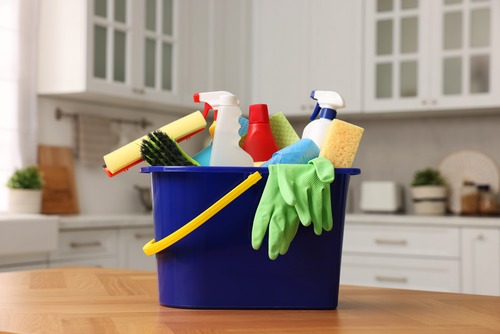
Housewives in the ’50s were sold the dream of sparkling clean homes with powerful chemical cleaners. Products containing ammonia, bleach, and other harsh substances were marketed as essentials for modern living. However, the safety warnings we now take for granted were minimal or nonexistent. Many people used these products without gloves or ventilation, exposing themselves to skin irritation, respiratory problems, and even chemical burns.
Mixing different cleaners, such as ammonia and bleach, could create toxic gases, yet this danger was poorly understood. Children and pets were especially vulnerable to accidental exposure. The heavy reliance on chemical cleaning products in the 1950s highlights the importance of understanding and properly handling household chemicals today.
9. Bakelite Electronics
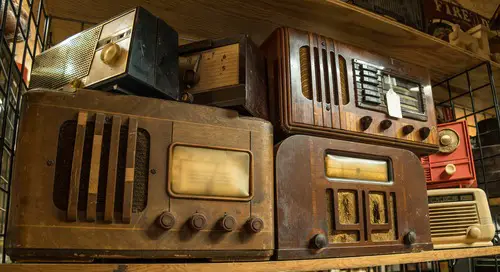
Bakelite, a revolutionary early plastic, became the material of choice for radios, telephones, and other electronics in the 1950s. Known for its heat resistance and durability, it seemed like the perfect material. However, Bakelite electronics posed significant risks due to their brittle nature. Cracks or breaks could expose users to sharp edges or even internal wiring, increasing the likelihood of electric shocks. More troubling was the fact that Bakelite often contained asbestos for added strength, unknowingly exposing users to this hazardous substance.
Over time, worn Bakelite items could release fine particles into the air, putting families at risk of inhaling them. Additionally, when burned or heated, Bakelite emitted toxic fumes that could harm indoor air quality. While Bakelite was eventually replaced by safer, more flexible plastics, its prevalence in 1950s homes serves as a stark reminder of the hidden dangers of early synthetic materials.
10. Electric Blankets
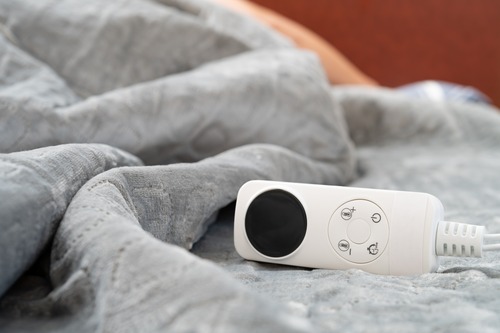
Electric blankets were a cozy luxury in the 1950s, allowing homeowners to stay warm without turning up the heat. However, early models often lacked the rigorous safety features we associate with today’s appliances. These blankets were prone to overheating due to inadequate temperature regulation, which increased the risk of fires. Additionally, frayed or damaged wiring could expose users to electric shocks or even cause short circuits. People often left them running for extended periods, creating further risks, especially when combined with flammable bedding materials.
Another concern was the potential health risks from prolonged exposure to electromagnetic fields (EMFs) emitted by these blankets. While research on EMF exposure is still inconclusive, early designs had little shielding, leading to heightened worries among later generations. Modern electric blankets are built with auto shut-off features and better materials, but the vintage models from the ’50s lacked such safeguards. This serves as a reminder of the importance of prioritizing safety in household comforts.
11. DDT for Pest Control
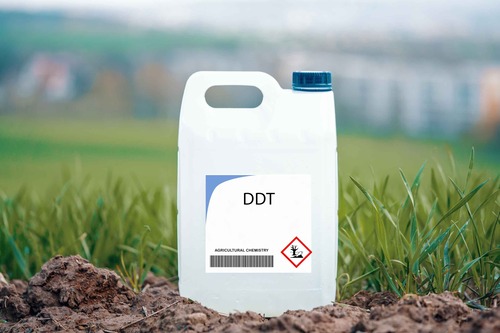
DDT was considered a revolutionary insecticide in the 1950s, widely used to combat mosquitoes, agricultural pests, and household insects. It was celebrated for its effectiveness in reducing the spread of diseases like malaria and typhus. Homeowners enthusiastically sprayed it in their gardens and even inside their homes, unaware of the long-term effects. However, what people didn’t realize at the time was the devastating environmental impact of this chemical. DDT accumulated in the food chain, harming wildlife, particularly birds. Species like bald eagles experienced population declines due to eggshell thinning caused by DDT exposure.
Beyond its environmental effects, DDT also posed risks to human health. Long-term exposure was linked to cancer, endocrine disruption, and developmental issues in children. Farmers and pest control workers who handled the chemical were at greater risk, suffering from dizziness, nausea, and other health issues. The widespread use of DDT in homes, gardens, and farms created a toxic legacy that lingers in some areas to this day. Its eventual ban in the 1970s marked a turning point in the regulation of pesticides, highlighting the need for thorough safety testing of chemical products.
12. TV Sets with Radiation Risks
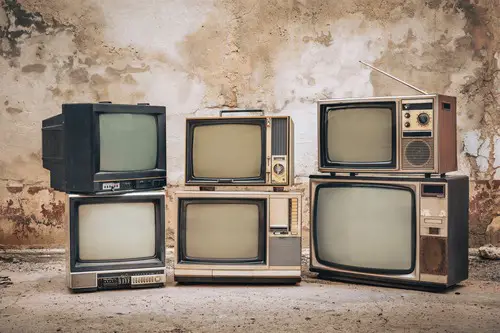
Television sets became a household staple in the 1950s, revolutionizing entertainment. However, the first generation of TVs posed a lesser-known risk: radiation exposure. Cathode-ray tube (CRT) technology emitted low levels of X-rays, particularly if the set was poorly shielded or defective. Families often sat close to the screen for hours, increasing their exposure without realizing the potential harm. Manufacturers were slow to acknowledge these risks, as public awareness of radiation dangers was still limited at the time.
Adding to the concern was the heat generated by these bulky sets, which could cause overheating and even fire hazards. Electrical components were not always up to modern safety standards, leading to risks of shock or short-circuits. While advancements in TV design have mitigated these issues, early sets highlight the learning curve of bringing new technology into the home.
13. Pressure Cookers
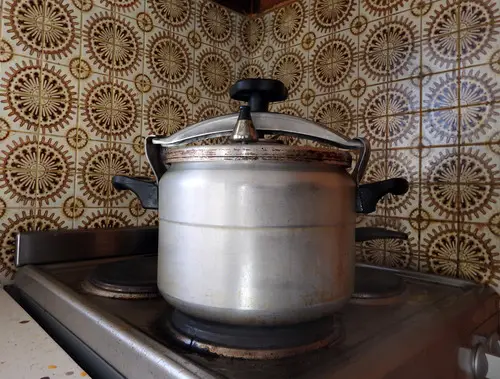
Pressure cookers were a popular time-saver in the 1950s, allowing families to prepare meals quickly. However, the designs of the time lacked the sophisticated safety mechanisms we now take for granted. Pressure gauges and release valves could fail, causing dangerous buildups of steam. If mishandled, these cookers could explode, sending scalding liquid and metal fragments flying across the kitchen. Reports of injuries and property damage were not uncommon, though these risks were often dismissed as user error.
Beyond the physical danger, the complexity of these early pressure cookers intimidated many users. Incorrect sealing or failure to follow precise instructions could result in accidents. It wasn’t until manufacturers introduced locking lids and automatic release valves in later decades that pressure cookers became safer and more user-friendly. This progression underscores the importance of balancing innovation with reliability in kitchen appliances.
14. Polystyrene Insulation
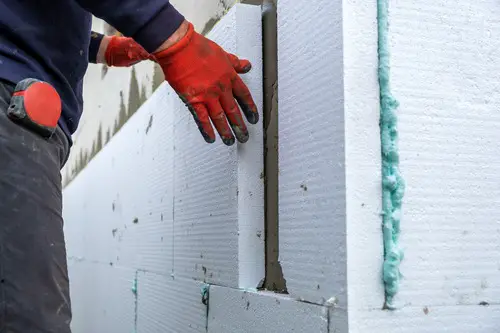
Polystyrene insulation gained popularity in the 1950s as an affordable and effective way to insulate homes. It was lightweight, easy to install, and helped families reduce heating costs. However, polystyrene is highly flammable, and early versions lacked the fire retardants used in modern materials. A single spark could ignite the insulation, leading to devastating house fires that spread rapidly due to the material’s combustibility.
Another issue was the release of toxic fumes when the insulation burned, posing serious health risks to both firefighters and occupants. Over time, it also became clear that polystyrene contributed to poor indoor air quality, as it could off-gas harmful chemicals. Though advancements have made this material safer, its early iterations highlight the hidden dangers that sometimes accompany technological progress.
15. Atomic Energy Kits for Kids

One of the most surprising products of the 1950s was the Atomic Energy Lab kit, which allowed children to conduct experiments with actual radioactive materials. Marketed as an educational toy, it included small amounts of uranium ore and other radioactive elements. The kit aimed to inspire interest in science, but the health risks were monumental. Handling radioactive substances, even in small amounts, could expose kids to harmful radiation, potentially leading to long-term health effects.
The kits also lacked proper safety instructions, as radiation awareness among the general public was minimal at the time. Children often handled the materials directly, unaware of the potential dangers. Though the Atomic Energy Lab was eventually discontinued, it remains a jaw-dropping example of how the enthusiasm for science in the atomic age overshadowed common-sense safety precautions.
